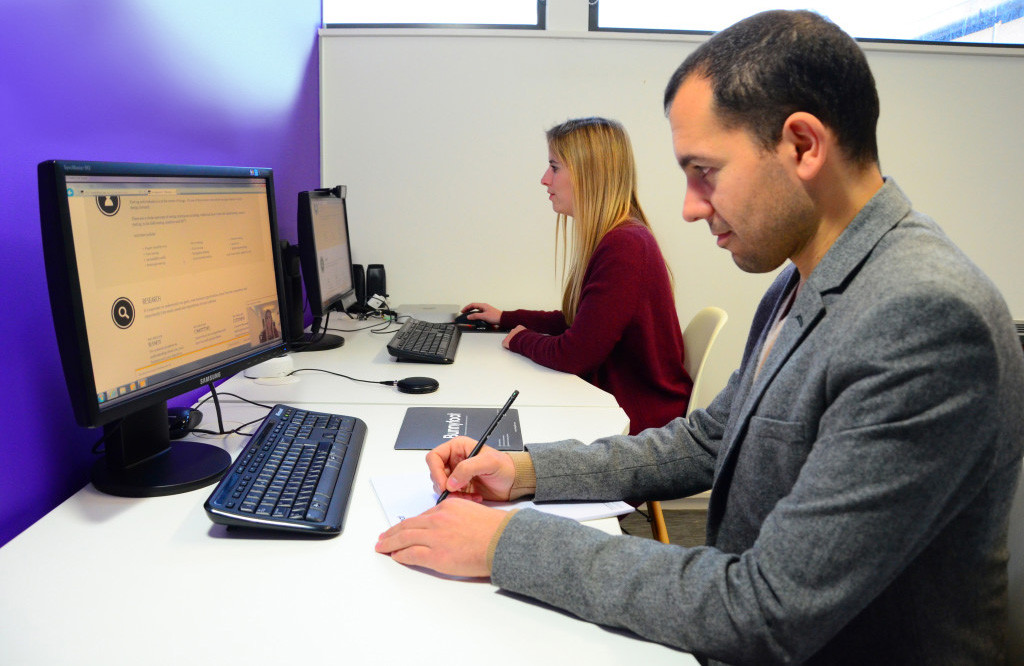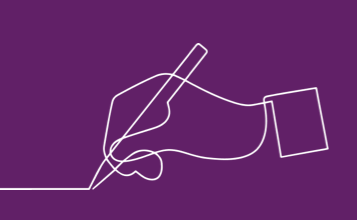A service we’ve been offering for a number of years is custom building UX labs. We help those wanting to carry out in-house UX research by building them their own testing facilities; from hardware & software through to furniture, AV equipment, processes, data storage advice and even providing training, support and participant recruitment.
One way or another?
This is a debatable topic and one we are often faced with when scoping our customers’ needs. A one-way mirror (AKA a two-way mirror) is often used between the testing suite and the viewing room allowing stakeholders and researchers to watch what the participant is doing in the testing suite. For a long time, this was the most reliable view possible to get of a customer interacting with your product or designs.
With the advent of HD TVs and affordable Pan-Tilt-Zoom 1080p cameras the one-way mirror is starting to look like a thing of the past; at least in a UX lab for one-on-one research. We never use one-way mirrors in our research at Bunnyfoot and here’s why;
Pros of installing a one-way mirror:
- Reliable (requires no technical support)
- Clear view of the whole room (depending on layout)
- May be expected by those paying for your lab / the uninitiated
- You can use it to check your hair before heading out to the pub (struggled to think of a 4th reason there).
Cons of installing a one-way mirror:
- Expensive
- May require structural work
- Requires adjoining rooms (getting two dedicated rooms for your UX facility is hard enough, let alone adjoining ones).
- Requires controlled lighting in viewing room (those viewing the testing must sit in near darkness potentially for days at a time resulting in a vampire-like complexion).
- Can be hard to stay awake in a dark room all day, especially if it’s hot!
- Glowing fruit logos need to be obscured with sticker or post-it notes (or participants will be haunted by floating apples).
- Intimidates your participants (observer effect: they only tell you want they think you want to hear. You can spend time trying to put them at ease but this wastes valuable research time).
- They pose sound-leakage issues (meaning sitting in a dark room, in silence, all day, possibly for days).
- Often not even used by those viewing the testing; the interesting detail is on the electronic duplication of the participant’s computer screen, mobile/table device or camera above the paper prototypes.
- Can actually be less engaging for those watching as there is a physical distance between them and the testing which could be closed by a zoom lens.
- Feels old fashioned to those familiar with more modern research technics.
- Distracting for the narcissistically vain (participants and consultants!).

Opting to go without a one-mirror in favour of a usable, flexible, unobtrusive and expandable AV system affords you a much more powerful, flexible and comfortable testing suite for participants and observers alike. Providing you intelligently combine well-positioned HD cameras & screens and combine this with an intuitive and powerful recording solution you will ensure your lab can allow for the collection and sharing of insight from a variety of testing scenarios.
Note that one of the adjectives there was usable! Make sure the technology is easy to use and aids engagement rather than acts as a distraction. You will want any UX staff to be able to use the lab with minimal training and carry out great work without worrying about having to master too many new gadgets.
Another benefit of prioritising the specification of your AV equipment (over the installation of a one-way mirror) is the ability to record and securely live-stream your testing sessions in high definition. Although there is nothing better than gathering all of your stakeholders together in a room and watching/discussing the testing as it happens; sometimes it’s just not possible so providing access externally ensures no one misses out. This can also be a good tool for promoting your department internally.
A caveat…
From the outset we ask customers which types of testing their facility will be accommodating. If one of those is focus groups with 8-10 participants, then perhaps a one-way mirror could be the most efficient way of allowing those viewing to switch between 10+ faces and view points. But for testing with lower number of participants, a range of silent HD cameras remotely-controllable for the viewing suite could be the better fit.
‘The Myth of the One Way Mirror’ provides further reading on the subject. If you have a different experience of one-way mirror in one-on-one UX testing, we’d love to hear from you – let us know in the comments below.
Find out more
Contact uxstudios@bunnyfoot.com to discuss your needs for specialist lab builds




